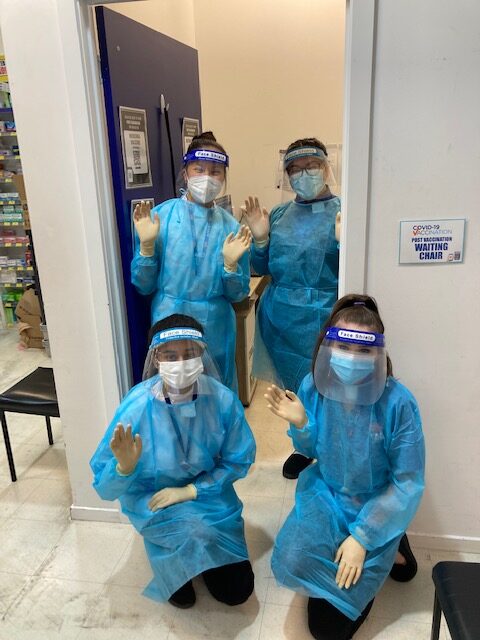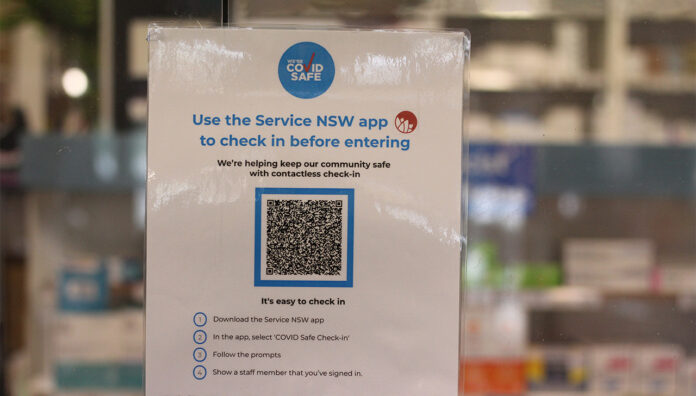Despite high vaccination rates in New South Wales and the ACT, pharmacists know safety measures will remain paramount for a while yet.
The end of Canberra’s 9-week lockdown on 15 October was a ‘soft lifting’ of restrictions, according to pharmacist Mandy Wang MPS, with most non-essential retail outlets remaining closed.
Her team, however, is bracing for an increase in foot traffic due to retail’s big return this Friday (22 October), when restrictions will lift a week earlier than anticipated.

To prepare, Ms Wang has put measures in place to ensure patients’ needs can be met while social distancing is maintained.
‘The biggest one is utilising digital prescriptions,’ she said. ‘We’re trying to get as many people’s scripts prepared and ready to go prior to them coming into the pharmacy to reduce waiting time, which causes a backlog of [patients].’
The pharmacy will also use SMS reminders for patients who drop off paper prescriptions, which will send a notification when their medicine is ready to collect.
ACT Health has also approved the pharmacy’s request to move its vaccination clinic and waiting area off site, which should improve the flow of patients through the premises.
‘We work in a shopping centre, so they’ve been quite accommodating in allowing us to use the space next door to the pharmacy,’ Ms Wang told Australian Pharmacist.
Canberra, the place to be
With a vaccination rate approaching 100% first dose for patients over 12 years old, Ms Wang said there is minimal hesitancy in the ACT.
‘Every person we talk to follows directives,’ she said. ‘If we ask them to sign into the CBR [contact tracing app] or put on a mask, they’ll do it.’
However, Ms Wang has discussed with her staff how to handle the rare situation when a patient doesn’t want to wear a mask.
‘Because we want to protect all our customers, we ask them to wait outside and give us their shopping list.’
This ensures the pharmacy can still provide essential services, especially in the case of emergency prescriptions, while ensuring minimal contact with other patients and staff.
Maintaining safety
Vaccinated healthcare workers may face reduced isolation requirements based on the nature of COVID-19 exposure, under guidelines recently released by the Communicable Diseases Network Australia. But Ms Wang said risk-minimisation standards should remain high.
‘Just because we are fully vaccinated, it doesn’t mean that we are 100% immune to contracting COVID-19,’ she said. ‘So we will look into ways to [continue] protecting ourselves.’
This includes ensuring staff still have access to PPE, such as N95 masks and face shields, and continuing to wipe down surfaces every hour.
‘We can’t control what other people do, so it’s all just about [managing] what we can do to keep ourselves safe,’ Ms Wang said.
‘When we start to open up, it’s important not to forget about those things we did during lockdown, because that is probably one of the best ways to protect ourselves.’
Opening up in the Hunter
For the last few months, Shortland Pharmacy in Newcastle, NSW has been serving patients outside.
To minimise contact time, a table was placed at the front of the pharmacy so patients could be triaged at the door.
‘We’re also vaccinating in the pharmacy as well,’ pharmacy owner John Jones MPS told AP.
‘Once patients completed their consent forms, they came into the waiting area so we could manage patient flow.’
Many patients have asked the pharmacy to issue vaccine certificates, particularly those from non-English speaking backgrounds who may struggle to understand the NSW government directives.
‘We aren’t given any extra funding or assistance to help manage that, [but] we’re expected to deliver the services,’ Mr Jones said.
All but one of Shortland’s staff members are fully vaccinated, which has reduced anxiety as patients filtered back into the pharmacy. And Mr Jones has seen the demand for COVID-19 vaccinations slow as the region inches towards 80% full vaccine coverage and case numbers fall.
‘I tried to [run] a vaccination clinic on Saturday, which was quite poorly attended,’ Mr Jones said. ‘I think we’ve got the bulk of people 12 and up vaccinated.’
He expects to see an upswing in bookings when patients are due for their second dose of Spikevax in the coming weeks.
‘It [should] pick up for another month, just while those first dose [people] get their second dose,’ he said.




 ‘We’re increasingly seeing incidents where alert fatigue has been identified as a contributing factor. It’s not that there wasn’t an alert in place, but that it was lost among the other alerts the clinician saw,’ Prof Baysari says.
‘We’re increasingly seeing incidents where alert fatigue has been identified as a contributing factor. It’s not that there wasn’t an alert in place, but that it was lost among the other alerts the clinician saw,’ Prof Baysari says.


 Beyond the arrhythmia, AF often signals broader pathological processes that impair cardiac function and reduce quality of life and life expectancy.5 Many of these conditions are closely linked to social determinants of health, disproportionately affecting populations with socioeconomic disadvantage. Effective AF management requires addressing both the arrhythmia and its underlying contributors.4
Beyond the arrhythmia, AF often signals broader pathological processes that impair cardiac function and reduce quality of life and life expectancy.5 Many of these conditions are closely linked to social determinants of health, disproportionately affecting populations with socioeconomic disadvantage. Effective AF management requires addressing both the arrhythmia and its underlying contributors.4  C – Comorbidity and risk factor management
C – Comorbidity and risk factor management Warfarin
Warfarin




